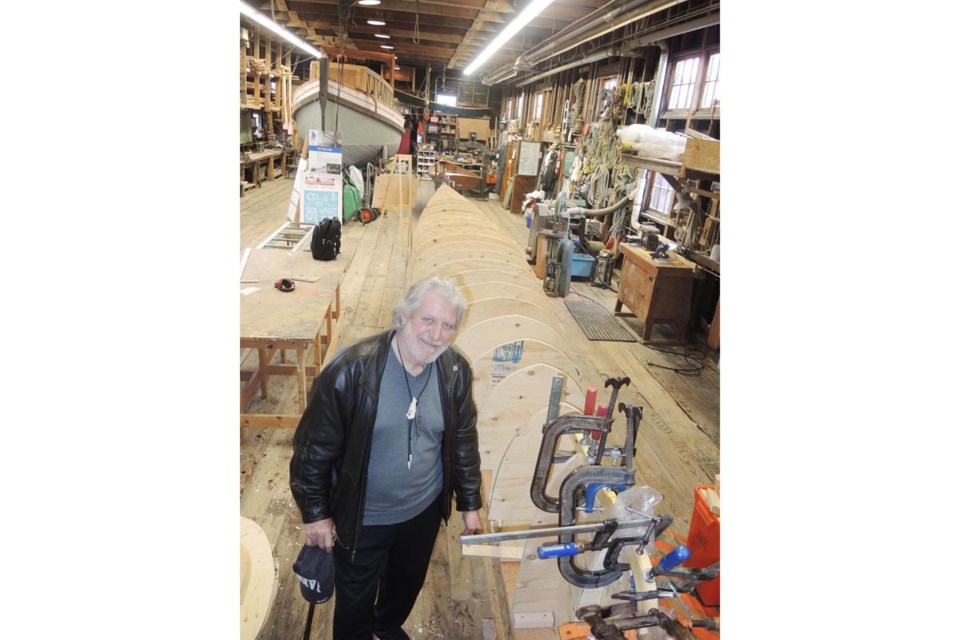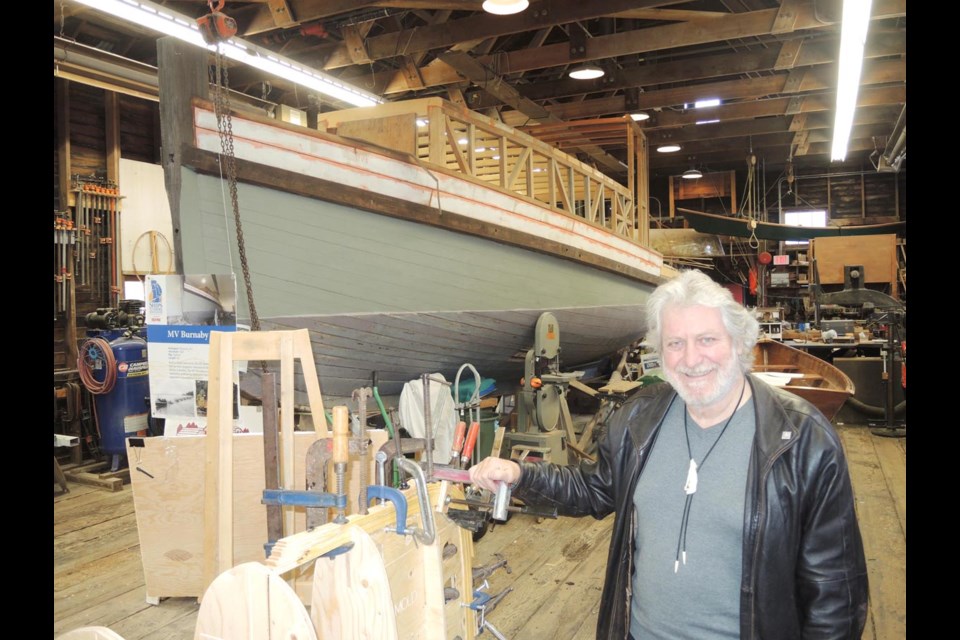The only thing matching the sweet smell of fresh sawdust rising up from the workshop floor was the thick stench of more than a century of history swirling in the air.
Surrounded on all sides by maritime ghosts of a forgotten past and finely-tuned tools of the present, you can almost reach out and touch the passion and obsession that fills the main shed at the Britannia Shipyard.
At the back of the Steveston building, supported on wooden stilts, is the early 1900s tugboat, the MV Burnaby, which used to tow the fishing fleet out to the mouth of the Fraser and is now nearing the end of a painstaking, 18-year restoration project by its love-struck owner.
Nearer the front lies a 100-year-old First Nations war racing canoe, being pieced together, inch-by-inch, on site, by shipwright Eric Fisher for the Britannia Heritage Shipyard Society’s Canada 150 project.
Together, the vessels total more than 200 years’ worth of maritime history and represent the renaissance of a skill that has been on life support for many years — wooden boat building, or shipwrights.
It’s the tugboat’s and the canoe’s presence that the society’s equally charismatic — but not quite as ancient — chair, Loren Slye, hopes will play a role in reviving the trade, starting with the building of a bigger wooden boat element within the 14-year-old Richmond Maritime Festival this summer.
“(The Maritime Festival) started as a wooden boat festival, but that got lost a few years ago and the emphasis became more towards entertainment; and the arts and things got involved. And that’s good, I’m a proponent for both, we need the arts and culture side,” Slye told the Richmond News, while stroking the frame of the war canoe.
“But our heritage here is in the fishing industry and the focus (of the festival) has maybe shifted a bit too far. We’re looking to level the playing field a little bit.
“We’ve managed to entice quite a number of crafts that take part in the Port Townsend festival (in Washington State) to come up here; we want Steveston to be the go-to place in Canada for boat festivals and activities.
“This site will be fully animated with boat building skills and every kid that wants to build a little boat will be able to, for a small donation.”

Slye said the society’s mandate is to maintain the boat-building skills in Steveston, “like they were back in the day.”
“Wooden boat building skills are almost a lost art, so we’re hoping to revive that; and we’re already reviving that,” added Slye, indicating that the society hopes to extend the boat-building and restoration attraction of the shipyard beyond the few days of the August festival.
“We’ve enticed a couple of shipwrights to actually join our board and now they’re working out of here.
“We have lots of great volunteers, but they don’t have the skills. These shipwrights do and we’re hoping they can teach people and our members that lost art.
“It’s about keeping alive the viability and history of building smaller boats and crafts; I believe that will be of a benefit to the community.
“Fort Langley did it with the fur trade. Steveston can do the same with the fishing industry.”
Slye said the wooden boat element of the festival is shaping up to be “significantly larger” than in previous years.
“We have an opportunity to become like Port Townsend, which has a huge maritime festival; if you think of a car show, they all go there to show off their boats,” he said.
“Steveston has that opportunity, in that we can become a classic boat show area and have an annual event, showing off vessels large and small at the same time as bringing in the community to see those shipbuilding skills being rehoned.
“Increasing the wooden boat part of the festival is the catalyst for all of that.”
Slye said the war canoe, although still a work in progress, may be ready in time for the Maritime Festival in August.
The MV Burnaby, however — which was based in Steveston in its day — will still very much be deep in its restoration phase.
“It has a fabulous history,” said Slye.
“It would tow the entire fishing fleet of row boats out from Steveston to the mouth of the river during the likes of the salmon run and then tow them back in. It was a huge effort for them to row all the way out there.
“People will be able to come in here during the festival and see up close the work being done to restore it.
“We’re trying to recreate a little of what Steveston was. And this boat is probably the largest boat that has been built here since the 1940s.
“We want to get back to building larger boats and larger crafts and restoring our history. Boats like the MV Burnaby will help us with that process.”
n The City of Richmond has agreed to bolster, to the tune of $118,000, the wooden boat element of the Maritime Festival.
At a city council meeting last week, Coun. Harold Steves said he was “extremely disappointed in the wooden boat part (of the festival) last year.
“Most of it was Port Metro Vancouver and a whole lot of groups that had nothing to do with wooden boats.”
City staff told Steves that the city will, this year, take over a whole section of the site and the Britannia Heritage Shipyard Society will play a lead role.
“Are we going to have something different than people walking around on stilts? asked Steves. “People wandering around on stilts in a costume is not my idea of a festival.”
City council unanimously endorsed city staff’s “approach” to the wooden boat element of the Maritime Festival, which includes increased marketing and wooden boat programming.



